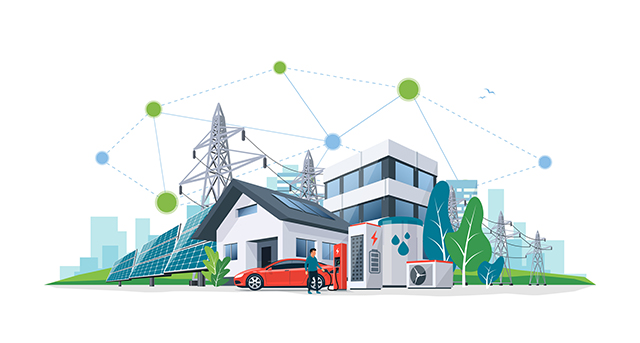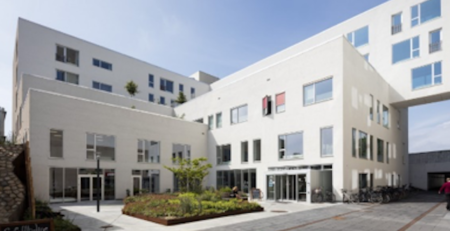VITO’s experience in Smart2B was full of surprises
VITO is Belgium’s main research institute in sustainability. In Smart2B, among other tasks, VITO has been leading work package four, tasked with the development of a SMART2B Services toolbox. VITO has tremendous experience in residential building control for renewable energy – we started from the pool position.
Smart2B aimed at increasing the smartness of the European building stock by unlocking the potential of the large number of legacy devices and assets in existing buildings rather than designing new devices or buildings from scratch. Within the project, innovative interfaces and clever technical solutions have made devices not originally fashioned for interoperability in ordinary buildings reachable for smart control, enabling cost-saving synergies, increased comfort, and active participation in a smart grid.
Expect the unexpected…
To achieve a clean separation of concerns, the Smart2B consortium had designed an elegant, layered, architecture that would abstract base control and the various novel techniques for device access from the service layer. For the development of services, we therefore were in the convenient position of being able to focus on the service logic itself, offering multi-criteria load scheduling, indoor air quality, predictive maintenance of assets and devices, automated smart assessment and advisory, and more; all independent of how the sensing and data collection is performed or of how optimized control signals reach the devices. Not being the focus of the project, the developed services are here to demonstrate the benefit of increasing the smartness and involving commonplace devices. Icing on the cake…
In building the services however, we have arrived at quite unexpected insights. The multi-criteria load scheduling for example is implemented out of three components: an energy efficiency optimizer, a flexibility calculator, and the overall load scheduling itself. Moreover, these three components are contributions from three different Smart2B partners, CERTH, RWTH, and VITO itself.
Is it possible to throw together three different services from three different institutes and have them smoothly perform one task? It turns out that yes: not only it is possible, but the combination of the components turns out to be even stronger than each single one. For us at VITO, and certainly also for the other partners involved, this points out a very promising meta-result: very diverse services can, if interfaces are well abstracted, perform and together reach more than the sum of the components. Moreover, very specific solutions (e.g., the minimization of the energy consumption of devices) can provide valuable input to other, similarly specific solutions (e.g., the determination of available flexibility). Improvements in one can increase the value of the other, instead of breaking the system. The whole system thus stays transition safe, which is practically tremendously important. For VITO this is a confirmation that we will continue to aim for components competing on innovation and quality and allowing for continuous improvements. Interoperability is the key.
… and push towards new boundaries
At the same time, we witness the elegant, layered, architecture that enabled smart services on legacy devices has been somewhat overambitious. In reality, the colorful variety of clever solutions developed in Smart2B to reach those devices can in principle no longer be ignored on the higher control tiers. It does make a difference whether an asset is reached by smart breakers, universal remotes, mechanical actuators, clever setpoint manipulation, generic home automation, or through a human user in the loop.
Before Smart2B, the services layer (i.e., the optimal control layer) could ignore the usually uniform method of device access, but with these novel innovations the optimization algorithms in the smart services need to consider aspects like varying time resolutions and even social, human-centric, angles. We consider this an important lesson and will dedicate future R&D to smarter services that can perform under complex, unsteady, circumstances.
Talking about the human angle, placing novel prototype sensors and actuators in children’s homes is a whole different challenge. The algorithms, models, and optimization experts at VITO owe quite some respect to the pilot owners that had to fix all those little devil-in-the-detail problems with misplaced temperature sensors, pulled smart plugs, and other little things life throws at you. Not to mention occasionally having to rent an EV so that charging algorithms could be tested.
We certainly look forward to upcoming projects with our Smart2B partners.













